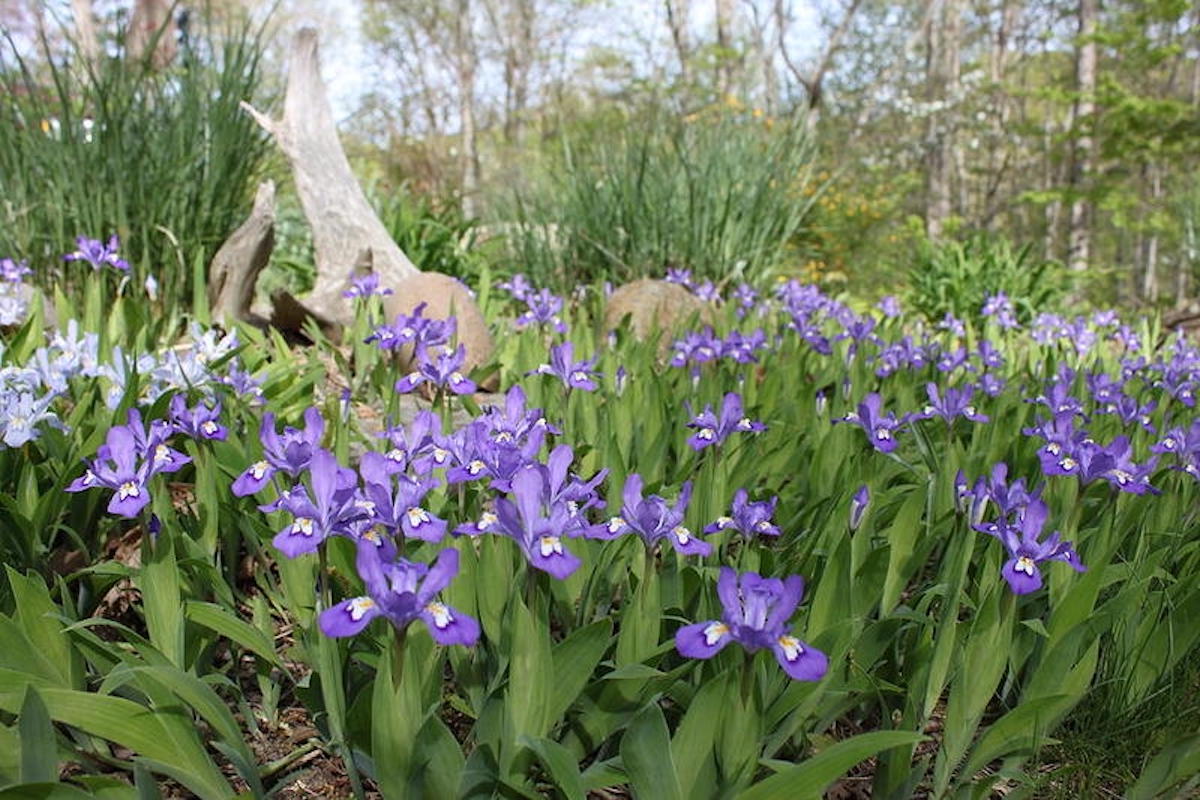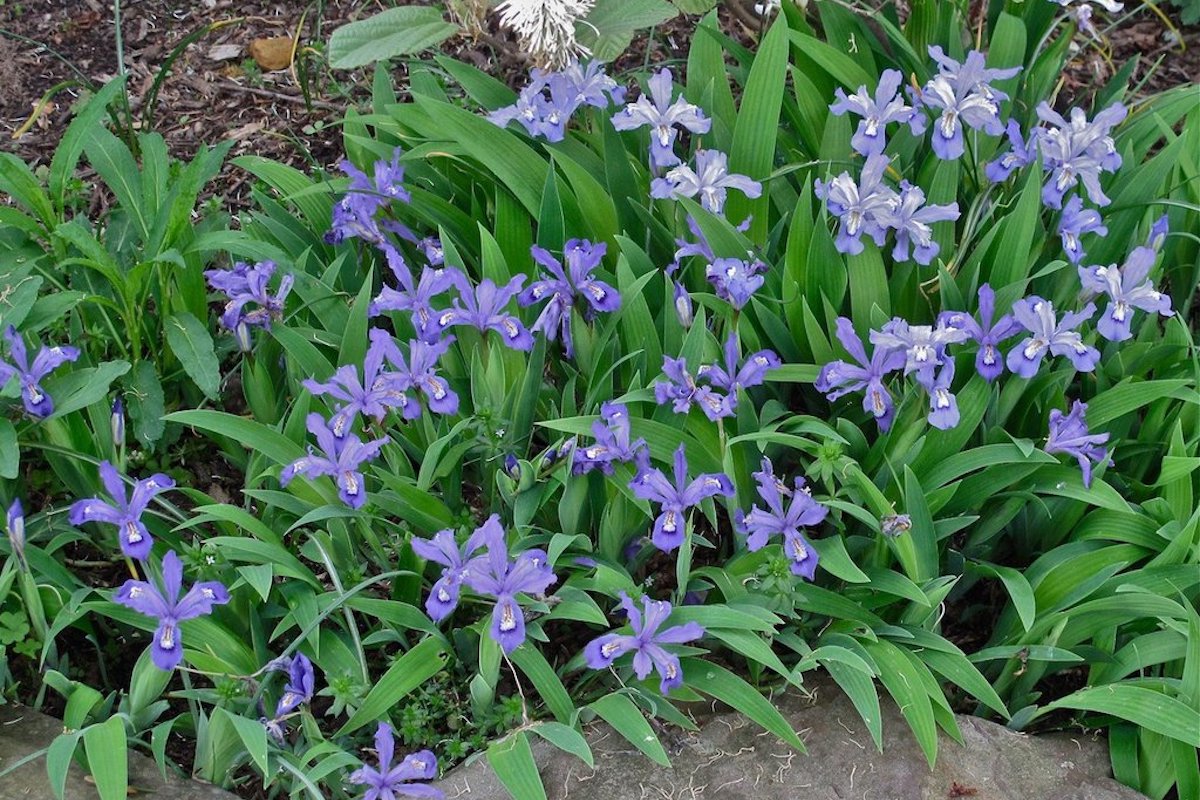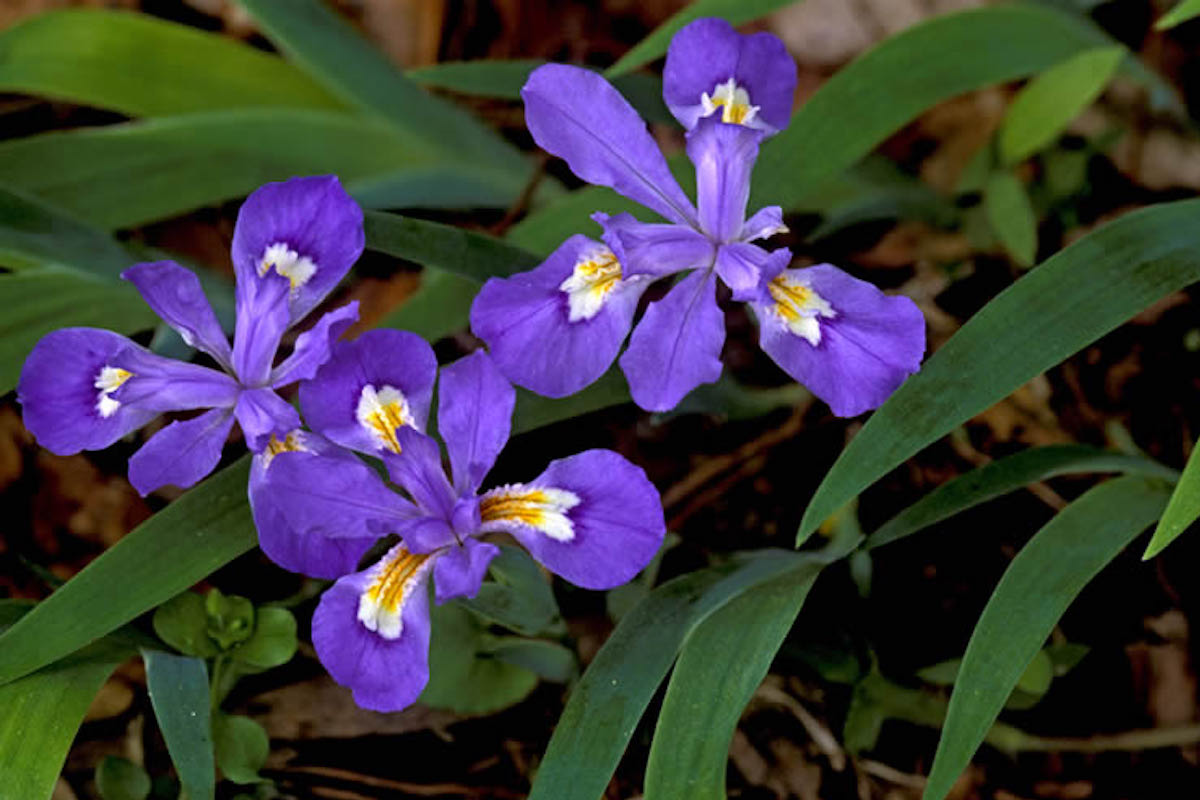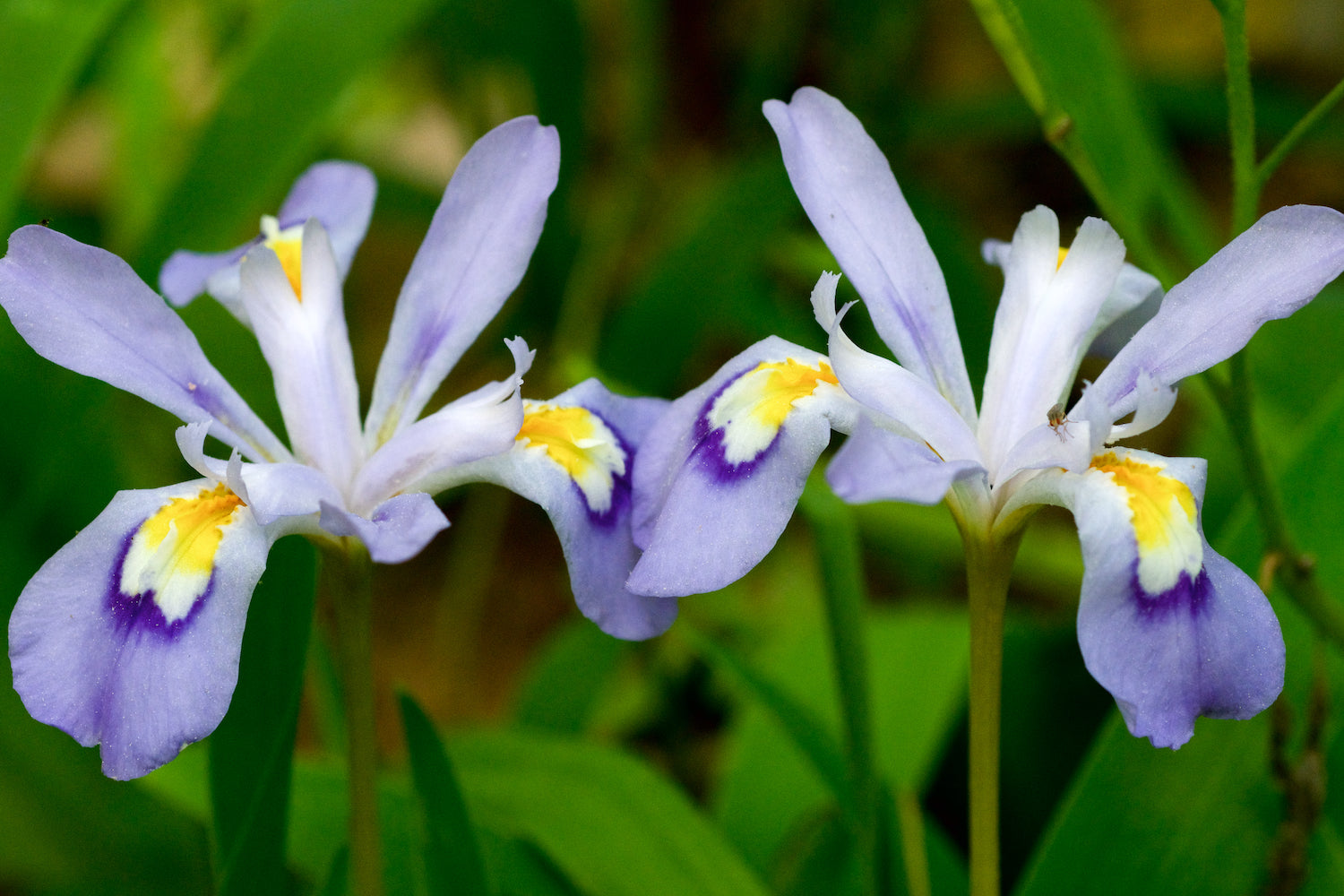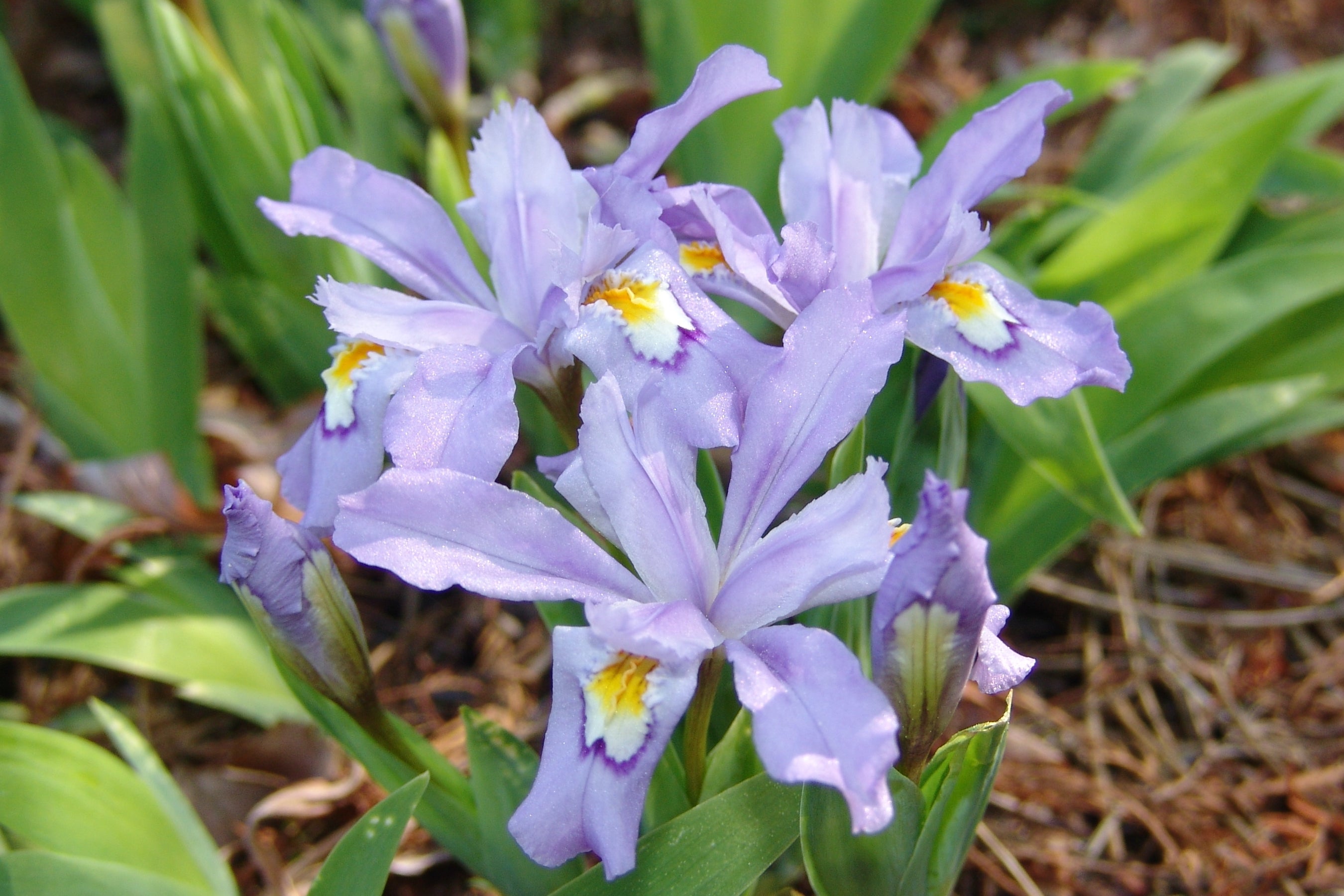Iris cristata
Approx. 0.5 litre pot
About this cultivar:
Iris cristata is a low-growing, rapidly spreading plant that features varying pale blue, lilac or lavender iris flowers with gold crests on the falls. Flowers are borne on very short stems, often appearing nearly stemless. Narrow, sword-shaped, yellowish-green to medium green leaves arise from a network of branching rhizomes. In its native North Amercia it typically occurs on rocky, wooded slopes, on bluffs, and along streams. When in flower, a well-developed bed can produce a spectacular drift of blue colour. Worth a try!
In the 1750s, the American Quaker botanist, John Bartram (1699–1777) introduced Iris cristata to England. It has been in European culture in since 1766. It was first published and described by Scottish botanist William Aiton in Hortus Kewensis (a catalogue of the plants cultivated there) in 1789. Commonly called dwarf crested iris the species name means with tassel-like tips or crested.
- Position: Full sun, partial shade
- Soil: Almost any soil, grows well in Ballyrobert
- Flowers: March, April
- Other features: Suitable for Container
- Hardiness: H6 - Hardy in all of UK and northern Europe (-20 to -15°C), Fully hardy - grows well in Ballyrobert
- Habit: Mat forming
- Foliage: Deciduous
- Height: 0 - 15 cm (0 - 0.15 ft)
- Spread: 0 - 15 cm (0 - 0.15 ft) but spreads...
- Time to full growth: 2 to 5 years
- Plant type: Herbaceous Perennial
- Colour: Green, blue
- Goes well with: Hosta, Hemerocallis, Geranium
About this genus:
Iris (i-ris) is a genus of 260–300 species of flowering plants with showy flowers. It takes its name from the Greek word for rainbow, referring to the wide variety of flower colours found among the many species. As well as being the scientific name, Iris is also used as a common name. Long in cultivation there seem to be as many cultivars as plants. Culturally the genus has had quite an impact. The fleur-de-lis, a stylized Iris, first occurs in its modern use as the emblem of the House of Capet (rulers of France 987 to 1328). It is also the universal symbol for Scouting. Many artists have a 'thing' with Iris, not least Van Gogh- who was a fan of Iris (not just sunflowers).... see images opposite!
As a group, Iris species can range from drought-tolerant dry land perennials to bog dwellers and from sun to shade, so there is no set of cultivation rules for the genus as a whole. In general though the cultivars we have in our garden (and sell), are tough, low maintenance plants perfect for wet gardens and similar sites.
Try pairing irises in the garden with Hosta, Hemerocallis, Geranium. They also look great as a cut-flower; the reason you don't get them in florists is that they don't transport well.

